PIEVC High Level Screening Guide: A guide to completing screening level climate change risk assessments using the PIEVC Process
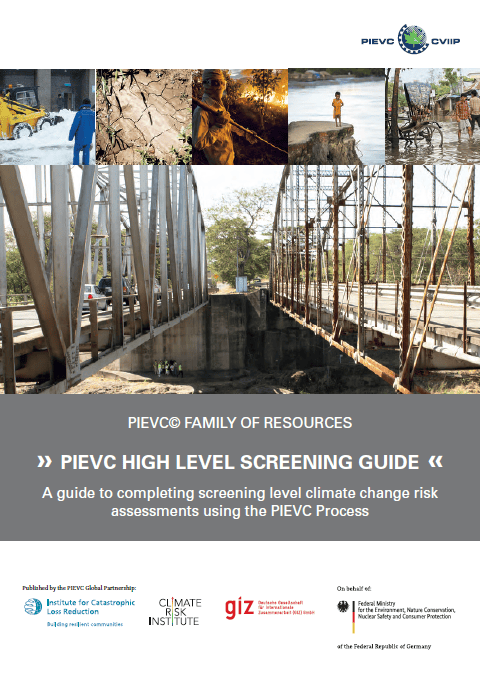
This PIEVC High Level Screening Guide (HLSG) is based on standard climate risk assessment
methods and is part of the PIEVC Family of Ressources. The PIEVC HLSG process is an approach
for undertaking vulnerability, risk, and resilience assessments. It is flexible enough to be applied to full assets or systems, to a single element of infrastructure, or to an entire portfolio of numerous assets.
PIEVC HLSG assessments result in the characterization and ranking of climate risk scenarios and the identification of those scenarios of highest priority for adaptation planning or more comprehensive
analysis.
PIEVC Large Portfolio Assessment Manual — A Guide for Prioritizing a Large Portfolio based on Climate Vulnerability
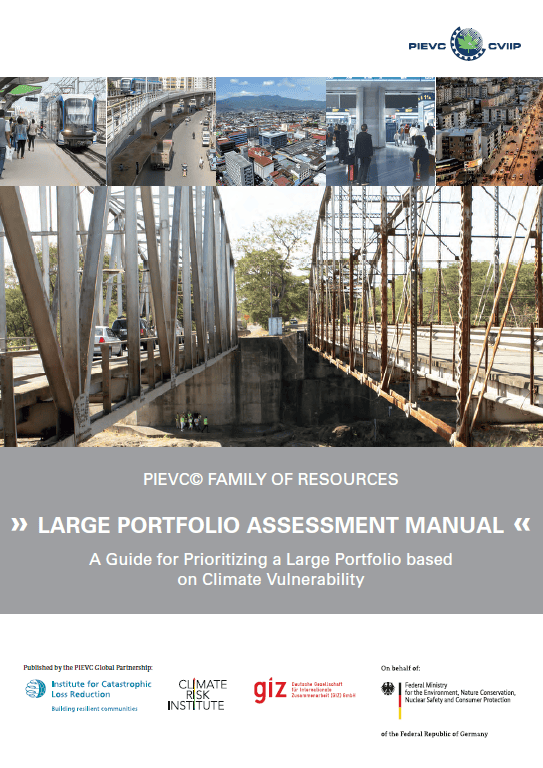
Part of the PIEVC Family of Resources, this manual provides guidance for infrastructure owners on how to use vulnerability and risk assessment to inform priority setting and managing climate resilience of a large portfolio of assets. It defines portfolio as a collection of infrastructre assets that are characterized by different climate vulnerabilities and risks.
PIEVC Catalogue — A Guide for Selecting Climate Risk Assessment Methods, Data, and Supporting Materials
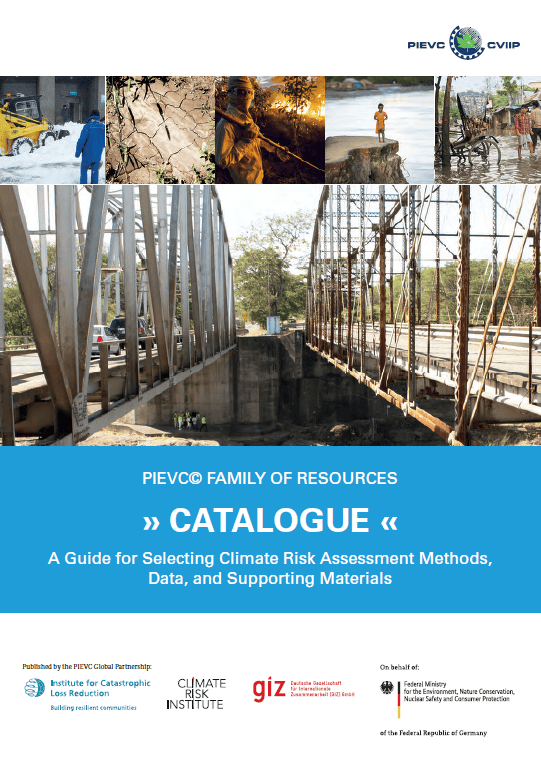
The PIEVC Catalogue is designed to help decision-makers navigate through the different considerations and options for assessing climate change risk and resiliency using the PIEVC Family of Resources. The catalogue guides the users through the objective-setting process and based on their objectives, helps them choose the optimum assessment paths and tools.
Solutions in Focus – Key Themes for Ecosystem-based Adaptation
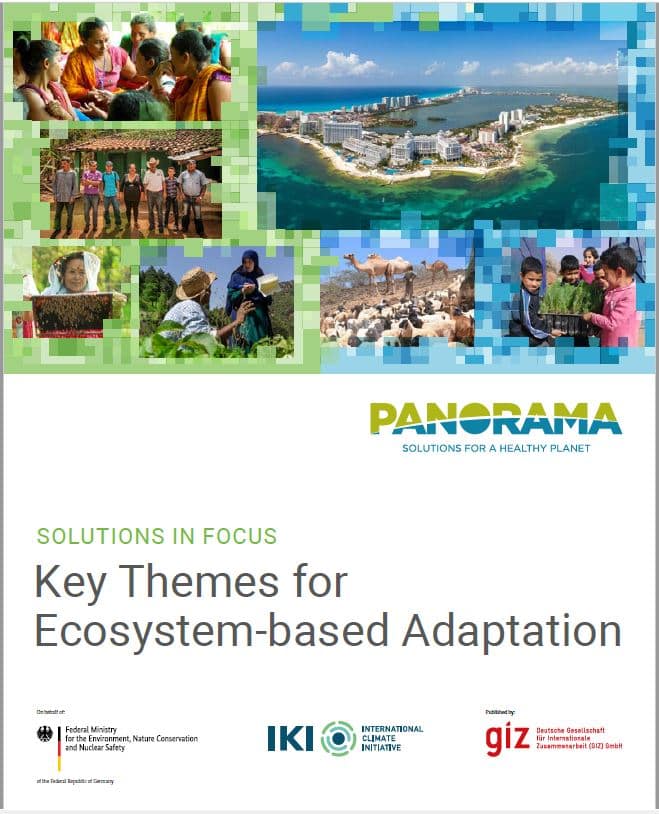
This publication intends to inspire policy- and decision-makers as well as practitioners by showcasing a selection of solutions that have been applied in very different settings and focusing on key aspects and themes that are important for the longevity of EbA. It shows that EbA has ‘many faces’: it is being implemented successfully in a broad range of countries and ecosystems and it is driven forward by all kinds of people and organisations.
‘Down to earth – why soils play a key role in ecosystem-based adaptation
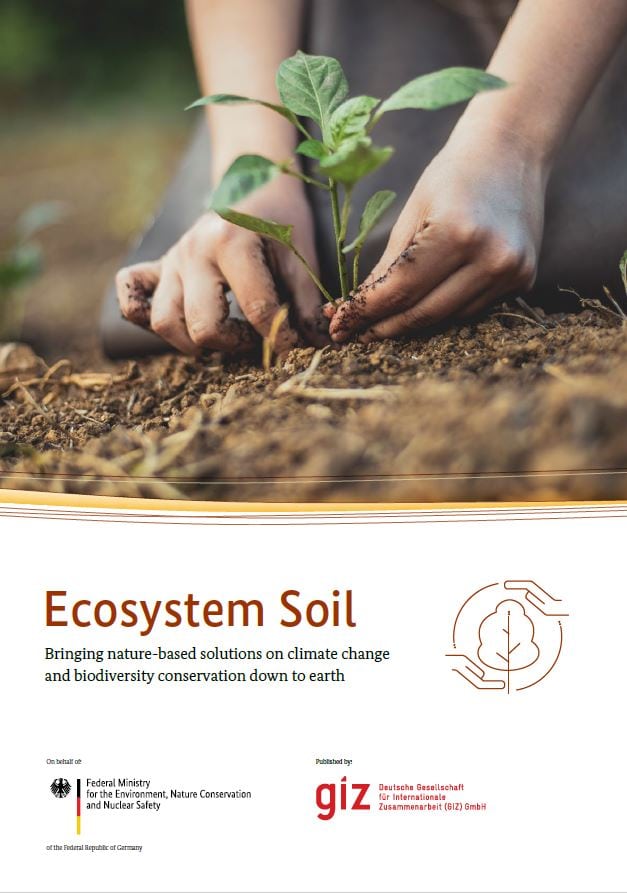
There is an unprecedented interest in nature-based solutions for climate change mitigation and adaptation. But something very important is often missing from discussions of such solutions: the role of healthy soils. As habitats for plants and animals, as regulators of climate and water, and as the foundation of terrestrial ecosystems and the vast majority of our food production, soils are critical to all ecosystem services – including those that humans depend on for survival.
This guidebook aims to demonstrate the importance of sustainable soil management (SSM) for adaptation to climate change, biodiversity conservation and the achievement of long-term food security. By adopting nature-based solutions such as ecosystem-based adaptation (EbA), farmers can dramatically increase their productivity while adapting to climate risks.
Human Mobility, Climate Change and Gender in the Philippines
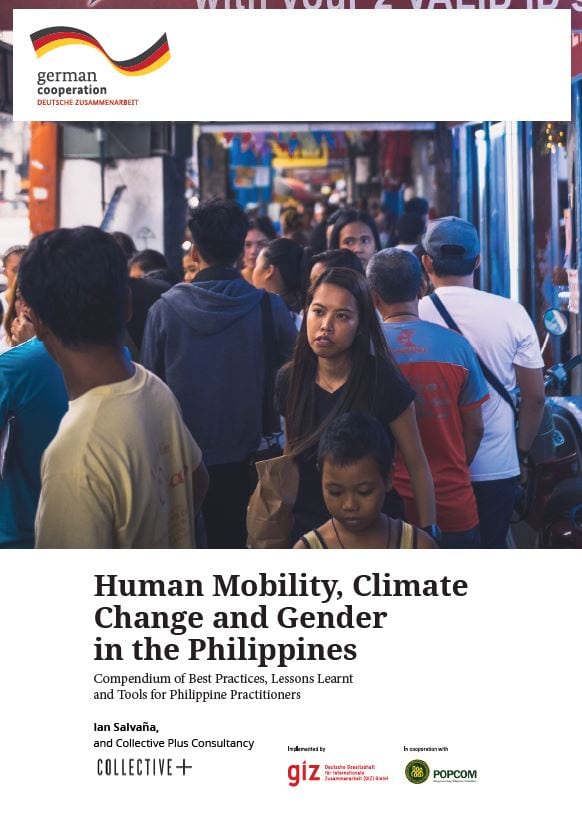
This compendium comprises an overview and analysis of gender approaches for different pathways of climate-induced mobility, working with six case studies on migration, displacement, and planned relocation. By presenting relevant lessons, best practices, tools, recommendations and resources to practitioners, a knowledge basis is provided for enhancing the gender-sensitive and sustainable management of human mobility in the context of climate change within the Philippines.
The landscape of financing options to address human mobility in the context of climate change
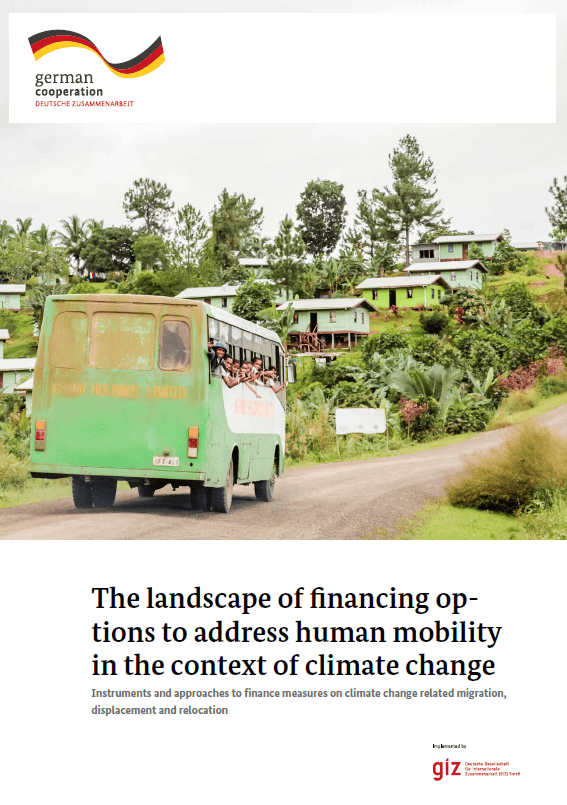
Slow onset processes and extreme weather events related to global warming are driving human mobility in context of climate change (HMCCC). Due to related extremes and slowly evolving processes such as floods, droughts, and rising sea-level, increasingly more livelihoods are destroyed, homes become inhabitable and economic opportunities are mitigated, resulting in migration, displacement, and planned relocation. To reduce those adverse effects related to climate change, the implementation of timely and diversified financing is needed. Therefore, with a focus on developing countries, this study presents and reflects on different relevant finance sources and instruments in terms of their linkage to HMCCC, effect on climate risks, implementation timing, and gender aspects. 10 finance instruments and tools that address HMCCC have been selected with a non-exhaustive approach for analysis, coming from a range of international, public, and private sources. Additionally, the effect of the COVID-19 pandemic on financing flows and options for HMCCC has been considered in an exclusive chapter. The study closes with recommendations for different target groups, especially national governments, and donor organizations.
Climate risk management – a framework. Promising pathways to avert, minimise, and address losses and damages [Concept paper]
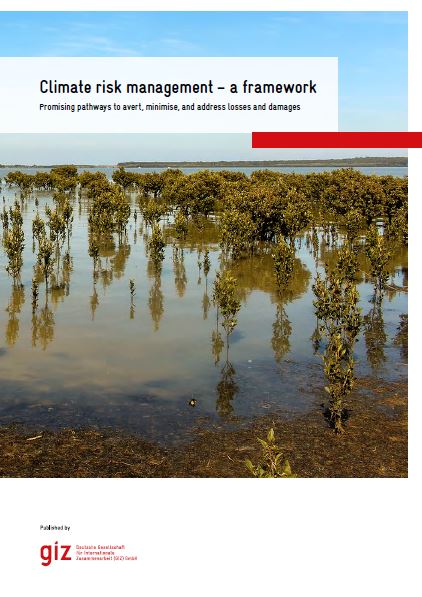
This concept paper introduces and explains the GP L&D’s Climate Risk Management (CRM) framework to avert, minimise, and address climate-related losses and damages in the most comprehensive way. It provides detailed information on the different steps of CRM, from risk assessment to the identification of a context-specific, complementary mix of measures as well as monitoring and evaluation and continuous learning.
Guia para Monitoramento e Avaliação de Intervenções de Adaptação baseada em Ecossistemas

O Guia para Monitoramento e Avaliação (M&A) de medidas de Adaptação baseada em Ecossistemas (AbE) fornece uma descrição detalhada do processo para planejamento e implementação de M&A e medição de seus resultados e a eficácia da intervenção para AbE aplicada.
La relance verte dans la pratique: Exemples du monde entier pour construire en mieux
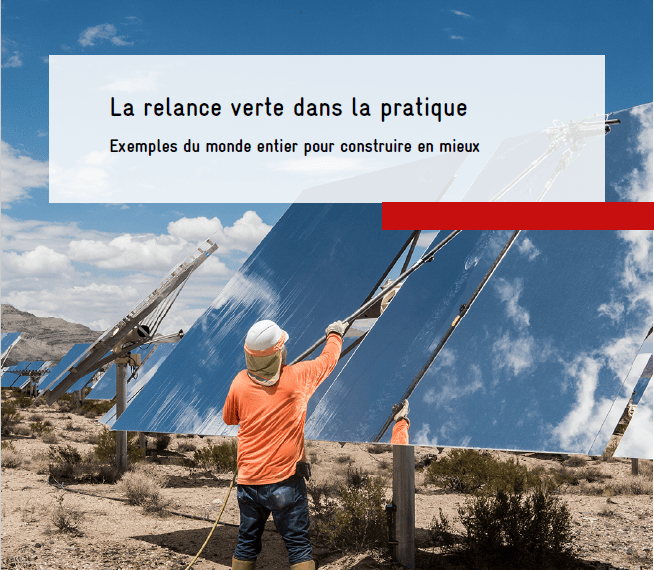
Ce rapport présente une compilation d’exemples susceptibles de servir de modèles pour la mise en oeuvre pratique d’une relance verte. Il s’appuie sur des mesures et des instruments déployés dans différents pays du monde, particulièrement dans des pays émergents et en développement.
